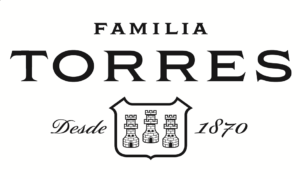
自然への賛歌
このコースでは、ラ・セウ・ドゥルジェイから出発し、カディ・モイシェロ(Cadí-Moixeró)自然公園を中心にピレネー山脈を東へ向かう行程を辿ります。壮大な景色の中にあるサンタ・マリア・デ・リポイ(Santa Maria de Ripoll)修道院をはじめ、40もの火山が存在するガローチャ(Garrotxa)火山地区自然公園、有名な地方自治体でもあるサンタ・パウ(Santa Pau)、ベサルー(Besalú)、バニョレス(Banyoles)などを通り抜け、サルバドール・ダリの出身地であるフィゲラスを目指します。
データ
総距離
357km
区間
5
名所
6
主要なエリア
ラ・セウ・ドゥルジェイ
ペドラフォルカ(Pedraforca)
ピレネー山脈の美しい村
べサルー
ガローチャ火山地区自然公園
フィゲラス
区間
第1区間
ピカソ、ペドラフォルカとバルゲダ (Berguedà)の黒えんどう豆
この区間の一日の始まりは、ラ・セウ・ドゥルジェイのラフティングパークでアドベンチャースポーツを楽しみます。その後、壮大な断崖絶壁が待ち受けるカディ・モイシェロ自然公園をドライブし、目的地のゴスル(Gósol)でピカソ・センターを訪れます。ピカソが1906年にこの地で受けたインスピレーションを観察することができるでしょう。次の目的地はペドラフォルカです。そこで見る農具のフォークのような型をした雄大な山の姿は、ハイカーの目を引きつけます。この地区には、カタリ派の遺跡群であるカタロスの道(Camino de los Cátaros)をはじめとする全長約2000kmもの歴史的な街道網が、中世から存在します。 その後バガへと向かう途中、グアルディオラ・デ・バルゲダー(Guardiola de Berguedà)に立ち寄ります。11世紀に建てられたロマネスク様式の建築や宝石、サン・リョレンス(Sant Llorenç)修道院を見ることができます。
また、伝統的な地元料理もここでいただきましょう。特に、この地域特有のじゃがいもを使ったマッシュポテトは絶品。例えば、キャベツと混ぜ合わせたトゥルンフォス・コン・コル(trumfos con col)や、特徴的な黒色の大きなソーセージであるブティファラ・ブラックプディング(butifarra negra)と混ぜ合わせたパタタス・エンマスカラダス(potatoes enmascaradas)など、伝統的なマッシュポテトを堪能してください。 食後は、消化を促すためにバガにある中世の複合建築を散策してみましょう。
A ROMANESQUE CATHEDRAL
La Seu d’Urgell is a city with an interesting heritage linked to its status as diocese, the greatest example of which is the Cathedral of Santa María, the only entirely Romanesque cathedral found in Catalonia. We drive along the panoramic road that connects La Seu d’Urgell with Gósol, along a route that snakes between the pine forests that mark the western border of Cadí-Moixeró Natural Park. The first rays of sunshine glaze the honey-coloured walls of the villages we pass along the way: El Ges, Adraén, Fórnols, Cornellana and Tuixent among others, picturesque stone villages whose inhabitants have grown accustomed to living at a high altitude and in relative isolation.
WITH PICASSO IN GÓSOL
The pastoral tranquillity of the Berguedà mountain drew Pablo Picasso to another of these villages. On the back of a mule loaded with his easels, he climbed to the modest town of Gósol to spend the spring of 1906. They say the genius, who stayed at the only local inn, sketched more than one hundred works that marked the beginning of his cubist era in just three months. He painted the houses of the village and the landscape and kept notes in a travel diary, the Carnet Catalan, a reproduction of which is kept at the Centre Picasso de Gósol. While part of the group visits this museum and enjoys the local cuisine, the rest of us pull on our hiking boots and take a circular route that will take us around the perimeter of one of the the most iconic mountains of Catalonia: the Pedraforca. Across 17 kilometres and 790 metres of elevation change, we see the four sides of this rocky colossus, in addition to traversing a stretch of the road that the Cathars walked in the Middle Ages as they fled from France.
BERGUEDÀ CUISINE
In the afternoon we all meet again and continue on the road to Bagà, making a short stop at the Guardiola de Berguedà to visit the magnificent Benedictine cenotaph of Sant Llorenç. We end the day with a well deserved selection of local recipes. The table features a parade of pèsols (peas) negres with pancetta, patates emmascarades, potatoes cooked with botifarra negre sausages, and the sliced cabbage and potato known here as trumfos amb col. After dinner, we take a stroll through the picturesque village of Bagà.
第2区間
サルダーニャ (La Cerdanya)での高地体験
この区間は、ラ・モリナ(La Molina)・スキーリゾート まで登り、標高2520mにあるラ・ニウ・デ・ラリガ(Niu de l’Àliga)の山小屋 で山のディナーを楽しんだ後、月明かりの中で下山するコースです。この山小屋からは、サルダーニャ谷、リポイ、バルゲダーなどの絶景が望めます。 それから、ベイベル・デ・サルダーニャ (Bellver de Cerdanya)の中世の村へと進みます。 この村には、カタルーニャ州内にあるサンティアゴ・デ・コンポステーラの巡礼路の重要箇所の一つ、ロマネスク様式のサンタ・マリア・デ・タリョ(Santa Maria de Talló)教会 があります。リビア (Llívia)では、ヨーロッパで最も古い薬局の一つで、1415年当時のクラシックな外観を保っているエステべの薬局 を訪れてみるのも良いでしょうその後、カスタリャー・ダ・ヌック (Castellar de n’Hug)へ向かいます。この町も石造りの家並みが美しく、リュブラガート(Llobregat)川の源流も息をのむほどに綺麗な形の滝です。その途中、カディ・モイシェロ自然公園にある黒松と赤松で生い茂った高台となった森林地帯を抜けていきます。
BÉCQUER’S INSPIRATION
Today we head out quickly towards the district of La Cerdanya, which features 17 municipalities located more than one thousand metres above sea level. We stop for breakfast in Bellver de Cerdanya, which before it was a town was one of the castles in the line of fortifications that controlled movements between Conflent and Urgell counties. Fresh bread with butter and homemade jam give us the energy we need to explore the medieval town centre — including where Gustavo Adolfo Bécquer wrote the legend The Devil’s Cross — and walk to the nearby Santa María de Talló church, one of the important points on the Camí de Santiago in Catalonia.
VIEWS OF LA CERDANYA
The route passes through Puigcerdà, a town by a beautiful lake. In its streets we can follow in the footsteps of the characters from one of Carlos Ruiz Zafón’s novels. Just seven kilometres from Puigcerdà, by taking a detour we have the option to visit the Llívia pharmacy, one of the oldest in Europe. We continue on local roads to villages with short names and hearty sausages, such as black and white bull and pà de fetge. After passing Urtx, Alp and Das, we climb to Meranges, a village with perfect rustic mountain architecture and the beautiful lake Malniu. From the village’s altitude of 1,590 metres, we enjoy views of all La Cerdanya.
CASTELLAR DE N’HUG
We have a free afternoon, so it is time to walk a little bit. We travel towards Castellar de N’Hug, one of the official Charming Villages and the point of arrival of the Cement Train. The town is known for its spectacular natural setting, its Romanesque architecture, and its enormous croissants. It is also famous because it is home to the source of the river that forms the backbone of the entire province of Barcelona, from the Pyrenees to the Mediterranean: the Llobregat. The path to its source is short and well-established, with wooden ladders and handrails. As we get to the end, we see the spectacular waterfall bursting straight from several cracks in the rock wall. Before it gets dark, with a couple of croissants weighing a kilo each in hand, we reach Ripoll where we spend the night.
第3区間
壮大なリポイからヴァル・デ・ヌリアまで
サンタ・マリア・デ・リポイ修道院には、聖書の一場面を表したロマネスク様式の優れた彫刻作品の一つが外壁に描かれています。この修道院は、バルセローナ伯爵家の始祖であるギフレ伯 によって879年に設立、オリバ大修道院長が率いていました。特に、10世紀から12世紀にかけて写本が盛んに作られ、宗教的・文化的な中心地となっていきます。 北に向かうと、リベス・デ・フレセル (Ribes de Freser)では ヴァル・デ・ヌリアにアクセスできる唯一の交通手段の登山鉄道を利用できます。ヴァル・デ・ヌリアには、12世紀から13世紀のロマネスク様式の彫刻であるヌリアの聖母子像も保管されています。また、スキーリゾートでは家族向けのアクティビティが数多く用意されています。 ガローチャ (Garrotxa)に向かう途中には、12世紀の修道院がある中世の村である、サン・ジョアン・デ・ラス・アバデサス (Sant Joan de les Abadesses)や、カンプロドン (Camprodon)、ベジェットがあり、中でも木と石で作り上げられたバルコニーが美しく目を引きます。また、崖の上に位置するカステルフォリ・デ・ラ・ロカ (Castellfollit de la Roca)からは、ガローチャ火山地区自然公園の素晴らしい景色を見ることができます。
STONE BIBLE
Today we get up in the mood for a mountain. For an energetic start we opt for an esmorzar de forquilla (breakfast), where some choose to enjoy botifarra amb seques and others go for a game meat stew which you absolutely must soak up with a thick slice of bread. After breakfast we head to the Santa María de Ripoll Monastery for an up-close view of this magnificent symbol of medieval Catalonia, founded in the year 879. Its monumental portico, covered in a mural of geometric motifs, plant shapes and characters carved in stone —they call it the stone bible— deserves careful contemplation.
VALL DE NÚRIA
From Ripoll we climb to the town of Ribes de Freser where we exchange the car for a rack railway which, after a thousand metres of elevation gain, drops us at the head of the Vall de Núria. The vista from here is worthy of an oil painting: trees, green meadows and a sanctuary that looks tiny against the backdrop of the Pyrenean peaks. From the sanctuary of Núria there are several simple routes where it is easy to encounter chamois and marmots. Part of the group goes for a small guided excursion and the heads out on a horseback ride to the Verge forest. Some other visit, when we have more time, we could take on the challenge of climbing to Puigmal, an iconic beak with an altitude of 2,913 metres that acts as a natural border with France.
CAMPRODON BISCUITS
We return to Ribes de Freser on the rack railway and take the route back to Camprodon, where we cross its medieval bridge and purchase several boxes of its famous artisanal biscuits. Between Camprodon and Olot, the road passes through beautiful villages, each well worth a stop if you have the time: Beget, a Charming Village, Sant Joan les Fonts with its medieval bridge, and Castellfollit de la Roca, perched on a basalt cliff that emerges from the landscape like the bow of a ship. After a very full day we head towards one of the many classic Catalan farmhouses that have been turned into accommodation, which can be found around Olot.
第4区間
ガローチャ火山の上空散歩
ガローチャは緩やかな丘が広がる開墾地で、70万年もの歴史を持つ地質学的な宝が眠る場所と言われています。ガローチャ火山地区自然公園は熱気球に乗って観察するのがおすすめです。この公園には、サンタ・マルガリーダ(Santa Margarida)火山や、イベリア半島最大のクロスカット(Croscat)火山など、カタルーニャ州で最も日が当たらない森の中に、40もの円錐型の火山があり、それらを空から眺めることができます。また公園内には、クロスカット火山の溶岩地帯の上に育ち、空まで届きそうな木々が生い茂るラ・ファジェダ・ダン・ジョルダ(Fageda d’en Jordà)自然保護地区もあります。 海岸の方へ向かう途中、フルビア(Fluvià)、ブルジェント(Brugent)、リェメナ( Llémena)といった川を渡るため、水と共存するこの地域全体を観察できるのも、この区間の醍醐味の一つです。その後、宿泊地となるサンタ・パウで、ガローチャの伝統的なレシピに基づき地場産品を用いた火山料理をいただきます。これは、サンタ・パウのユダヤ人が食べていたと言われる料理です。
LA GARROTXA IN A BALLOON
The alarm wakes us up before dawn. The early morning is more than justified because we have booked a flight in a hot-air balloon over the La Garrotxa Volcanic Zone Natural Park, a unique place on the peninsula, featuring a landscape of exceptional value and dense forests of beeches, oak trees and holm oaks. Part of the group decides to explore the volcanoes from the ground and will cycle one of the stretches of the Carrilet Greenway Olot. Those of us who are going to fly in the balloon travel just five kilometres to the south of Olot. The experience begins with assembling the instruments and inflating the balloon. The first rays of sunshine kick off this adventure, which is for the most part silent and contemplative. At our feet are the Volcano of Santa Margarida and el Croscat; in the distance we see the fog-covered Pyrenees. It is impossible to capture this kind of beauty in the frame of a photograph, it has to be experienced. While you can also explore them on foot, nothing matches the view you get from the sky.
SHOPPING IN OLOT
We all meet again in Olot. A guided tour of the city centre’s century-old market and shops helps us get acquainted with the district’s famous delights: beans we buy in bulk, sausages, chocolates and ratafía, one of the most beloved Catalan liqueurs. We arrange for lunch time to coincide with a visit to Santa Pau, another Charming Village, to try the most famous mongetes or fesols in Catalonia. If you’re looking to get in touch with nature, a good option is to go for a walk in the Fageda d’en Jordà, a beech forest that grew over the lava fields of the Croscat volcano and can be traversed on foot or in a horse-drawn carriage. Joan Maragall dedicated a poem to this beautiful setting: Li agafa un dolç oblit de tot lo món, en el silenci d’aquell lloc profond (A deep oblivion to the whole world emerges, in the silence of that deep place).
SLEEPING UNDER THE STARS
We drive to nearby Banyoles, where there are various camping options around the lake. We opt for glamping. We sleep in clear bubbles in the heart of nature that allow us to see the starry sky from our beds.
第5区間
ダリの芸術を生み出した街ランポルダ(l'Empordà
この区間はバニョレス(Banyoles)湖から始まり、その湖畔を歩きながら生息する動物を観察したり、また、ボート漕ぎを体験することができます。さらに北上し、今度は農作物の畑や山間を通って、南に見える景色をアーチ状の窓で囲まれた道を進んでいきます。次の目的地はベサルーで、ここはフルビア(Fluvià)川にかかるロマネスク様式の橋が印象的な場所となっています。この橋は中世の建築物の一つで、カタルーニャ州で最も状態が良く、当時のまま残っている橋です。 ベサルーの中心地には古くからユダヤ人街があり、ユダヤ教の礼拝堂とロマネスク様式のユダヤ人向け公衆浴場ミクワーの遺跡を見ることができます。
コスタ・ブラバ(Costa Brava)に入るとこの区間の終わりが近づいてきます。ここはサルバドール・ダリの故郷で、ダリのシュルレアリスムの世界観が生まれた場所です。フィゲラスにあるダリ劇場美術館(Theatre- Museu Dalí)では、 1500点にも及ぶ作品を見ることができ、街の中を歩くと、彼の人生の礎となる場所に出会うことができるでしょう。
SUNRISE IN BANYOLES
The Lake of Banyoles, located halfway between the peaks of the Pyrenees and the wide plains of the Empordà, wishes us good morning with the hypnotic pink tones of a sunrise over its waters. At this early hour it is just us and the bird watchers who have come to photograph some of the species protected by the Natura Network and the RAMSAR convention, which designates this wetland as a Wetland of International Importance.
KAYAKING ON THE LAKE
We continue our morning with a leisurely kayak on this aquifer, formed more than 250,000 years ago. The silence of our paddles allows us to travel without scaring the herons, storks and ducks who go about their business without seeming to care about our presence. After our boat trip we approach one of the fishing shelters that are scattered along the banks of the pond. These picturesque constructions from the nineteenth and twentieth centuries served as storage areas for fishing tools and as beach cabins for wealthy locals. To emulate those elegant ladies and gentlemen we take the opportunity to go for a dip in one of the areas set up for this purpose.
THE JEWISH LEGACY
From Banyoles, the road passes through pine forests to the noble town of Besalú, where we see the magnificent Romanesque bridge over the river Fluvià, iconic symbols of medieval Catalonia. The historic centre and the Call Jueu, the Sephardic quarter from the thirteenth century, today retains its extraordinarily well-preserved synagogue and mikvah. In the afternoon, we continue our journey to Figueres, the home town of genius Salvador Dalí. We dine on one of the terraces of La Rambla, where the teenage Dalí spent long hours drawing in cafés. In one, the café Emporium, the surrealist painter and his friend Luís Buñuel wrote the screenplay for the short film Un Chien Andalou.








